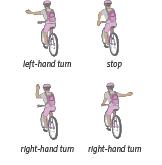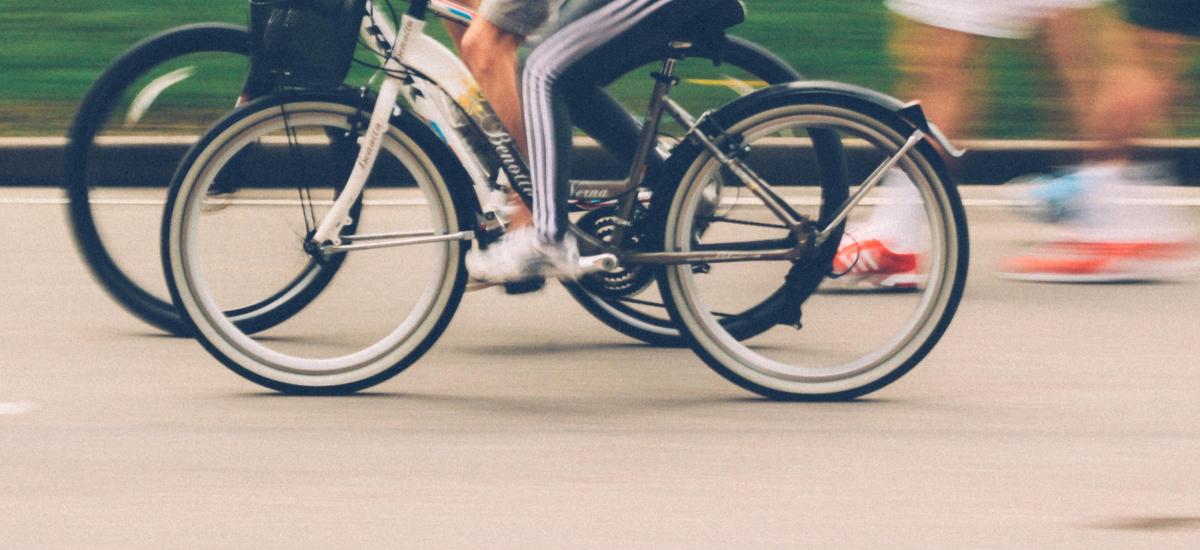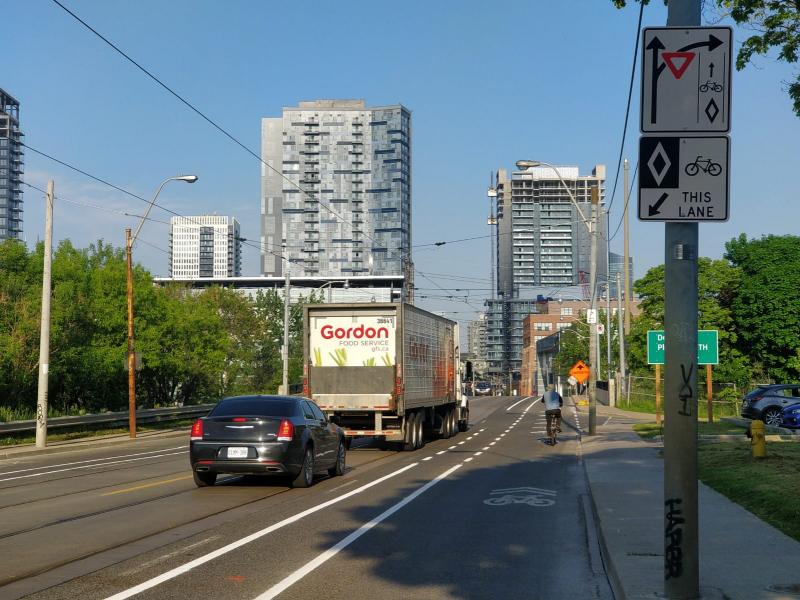
How to navigate intersections

Ask a Cyclist: Round 4
By Holly Reid

Holly is a long-time city cyclist, recreational road rider, Cycle Toronto member, and safe cycling advocate.
Each week, our resident safe cycling enthusiast Holly will break down common questions Torontonians have about riding their bikes in the city. Whether you are newer to cycling and want the rules of the road demystified, or are simply looking for a refresher as you get ready to ride this summer, follow along as Holly answers your questions.
Have a cycling question for Holly? Send it to media@cycleto.ca.
“I’ve read that turns at intersections are where most collisions take place. How can I be sure to navigate them confidently?”
Intersections are definitely tricky and not just for cyclists. With so many moving parts – vehicles, pedestrians and cyclists, and so many different options – left turns, right turns and straight on through, it’s hard to be sure what anyone is going to do. To play it safe, be aware of your fellow travellers and follow these best practices.
Put safety first at intersections
My approach to intersections is simple – slow down when approaching, scan the scene and proceed with a degree of caution. Sure, the traffic signals, cycling infrastructure and roadway design will dictate what to do. But you never know when you’ll have to stop suddenly or change lanes to get around a vehicle or pedestrian in your path. Here’s a quick look at how to make your way safely, whether you are passing through an intersection, or turning right or left.
First – a refresher on hand signals
Don’t underestimate the power of communication! Hand signals let others know what you are up to so they can plan accordingly. Being predictable helps too. Before you make a move, check over your shoulder to see if the way is clear, signal according to your intention, return both hands to your handlebars, shoulder check again and proceed when it is safe to do so.
Check out the Toronto Cyclist Handbook for more tips.
Going straight through is not always straight-forward
When travelling through an intersection, whether the street has painted bike lanes, separated bike lanes with a dotted line leading into the intersection, or no cycling facilities, always pass right-turning vehicles on the left side and only when it is safe to do. While it can be tempting to pass stopped vehicles on the right to make your way through, that puts you in the risky position of being “right-hooked”. If the road is busy, your best option may be to stop behind the vehicle until the turn is completed. I strongly advise against using the right-turn or left-turn lanes when you are going straight through – it will confuse other road users.
Painted bike lanes with dotted lines indicate cyclists should yield to vehicles turning right. Photo: City of Toronto
Cycle tracks or separated bike lanes that extend through the intersection are a different story. They give cyclists the right of way to proceed straight through – right-turning cars are supposed to yield to on-going cyclists. However, because this doesn’t always happen, you’ll want to be aware and prepared to stop.
Tip: Take a break and stop when the light turns yellow to allow any vehicles waiting to turn to clear the intersection – it’s a nice thing to do that will help keep you safe.
Turning right the right way
Right turns are always made from the right side of the road. Shoulder check first, signal and move to the right-side of your lane, or into the right-turn lane, when it is clear to do so. Always yield to pedestrians and make the right turn when the way is clear. If a right-turning vehicle is ahead of you, wait behind them before making your turn. This is critical if you are coming up behind a large vehicle such as a bus or truck – stay back and stay safe!
Turning left? It’s complicated!
Don’t underestimate the power of communication! Hand signals let others know what you are up to so they can plan accordingly. Being predictable helps too. Before you make a move, check over your shoulder to see if the way is clear, signal according to your intention, return both hands to your handlebars, shoulder check again and proceed when it is safe to do so.
Cyclists have two options when turning left and the one you choose will depend on your confidence and familiarity with the area, the roadway design and the speed and volume of traffic on the road. Left turns are relatively easy on residential roads and become more challenging as the number of lanes and traffic increases.
Option #1: Act like a vehicle
If there is a left-turn lane, position yourself at the centre of the lane behind vehicles also turning left. If there is no left-turn lane, take the centre of the lane and make your turn when the way is clear, yielding to pedestrians. Getting into position can mean crossing lanes of traffic so shoulder check first, signal, check again and proceed when clear. Keep to the same lane as you complete the turn and return to the right side of the road when it is safe to do so.
Option #2: Act like a pedestrian
Take the left turn in two steps – some people refer to this approach as a “Copenhagen-Left”. First, signal your stop and walk your bike across the pedestrian crosswalk. Next, turn your bike without obstructing others and walk across the intersection, remounting your bike when you’ve cleared the intersection. This may take a little more time but on busy roads and complicated intersections, it’s my preferred way to go. Better safe than sorry!
What about bike boxes?
Certain intersections in Toronto have bike boxes, which are designed to allow cyclists to proceed ahead of vehicles when the traffic signal turns green. Position yourself in the box to the left, centre or right, depending on where you are headed and remember to signal your turn if making one.
A bike box at St George and Harbord. Photo: City of Toronto
Intersections at a glance
Now let's put it all together. The Toronto Cyclists Handbook gives you the whole picture of your safe cycling options at intersections.
1. Turning left like a vehicle
2. A & B: The two-part “Copenhagen Left” turn
3. Straight through and avoiding the right turn lane
4. Danger zone for being “right-hooked”
5. Stay back and stay safe for right turns
Practice makes perfect
The best way to increase your confidence and safety at intersections is through experience. Do some trial runs at times when you know the roads won’t be busy. Practice your lane-changing skills on quiet roads in an area you know well until you feel comfortable changing lanes and making turns. By gradually building your confidence you can enhance your ability to navigate intersections safely.
I always keep these three principles in mind:
-
Be aware of others
-
Signal your intentions
-
When in doubt, slow down and proceed with a degree of caution.
Tell us!
What’s your top tip for proceeding through intersections? Let us know! Tag @CycleToronto on social media using #AskaCyclist and we’ll add it to our list.




